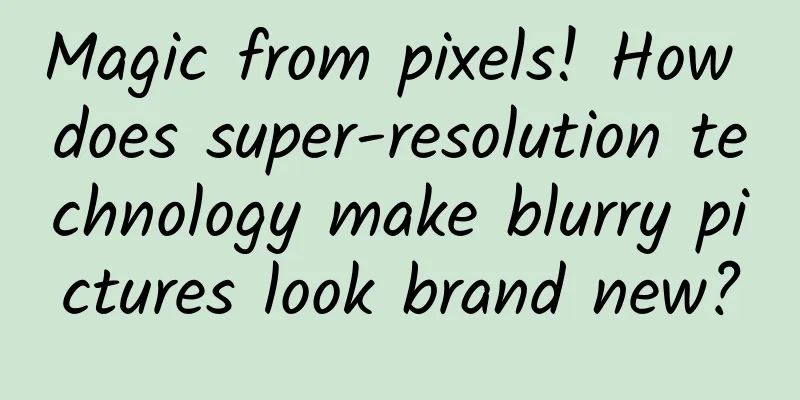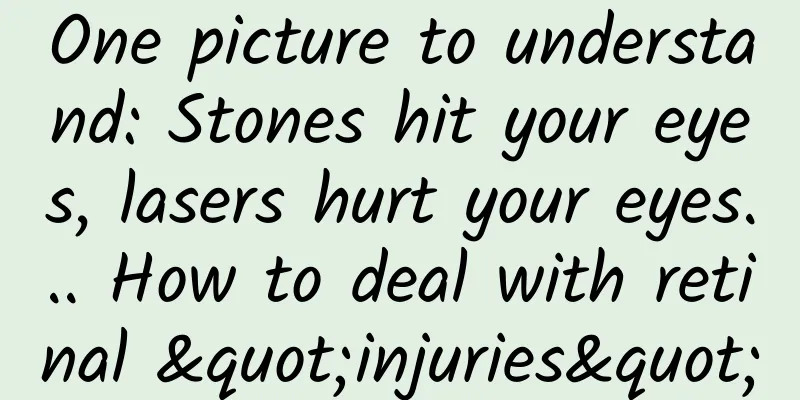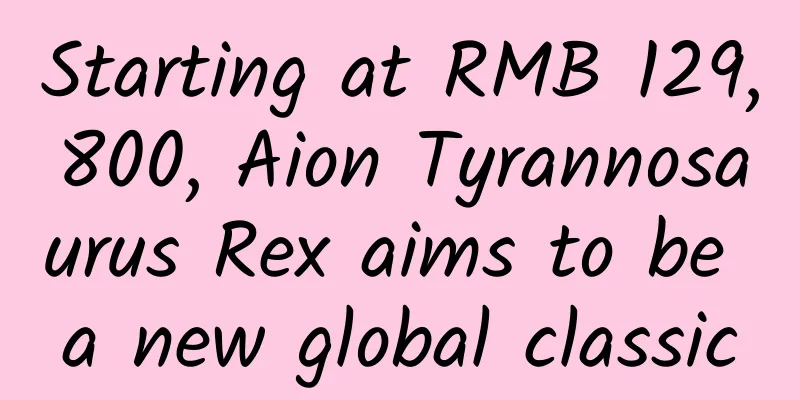Magic from pixels! How does super-resolution technology make blurry pictures look brand new?

|
In today's digital age, video and images are important digital assets, and their quality plays a vital role in data value mining. Super-resolution technology is like a magic key that opens the door to improving image and video quality. Its emergence has brought unprecedented changes and opportunities to many fields. From ancient photo restoration to modern high-definition video live broadcast, super-resolution technology plays a key role in it. This article will explain this cutting-edge technology from multiple aspects, including its origin, development history, cutting-edge research, and practical applications. 1. The origin of super- resolution technology Image super-resolution refers to the restoration of a high-resolution image from a low-resolution image or image sequence. High resolution means that the image has a high pixel density and can provide more details, which often play a key role in applications. The origin of super-resolution technology can be traced back to the 1950s, when researchers began to explore the problems of image reconstruction and enhancement. However, the real development and popularization of super-resolution technology was in the 1990s. With the advancement of digital image processing technology and the improvement of computer computing power, super-resolution technology began to receive widespread attention and research. 2. Development of super-resolution technology Early super-resolution technology was mainly based on interpolation and filtering techniques, which increased the resolution by inserting additional pixels into low-resolution images. However, these methods often produce blurred and jagged edges. With the rise of deep learning, researchers began to use neural networks for super-resolution. In 2014, the first deep learning super-resolution model SRCNN came out. SRCNN learned the mapping relationship between low-resolution and high-resolution images based on a three-convolutional layer structure, achieving better super-resolution effects. Since then, researchers have continued to explore new network structures and optimize algorithms to promote the continuous development of image super-resolution technology. Existing super-resolution methods are mainly divided into the following three categories: ① Interpolation-based methods: This is one of the earliest super-resolution technologies. Common interpolation methods include nearest neighbor interpolation, bilinear interpolation, and bicubic interpolation. Although these methods are simple and effective, they usually assume that the image is continuous and do not introduce more effective information. Therefore, the edges and contours of the reconstructed results are blurred, and the texture restoration effect is poor. ② Reconstruction-based methods: This type of method regards image super-resolution reconstruction as an optimization problem and obtains a local optimal solution by introducing prior knowledge. Common reconstruction-based algorithms include projection on convex sets (POCS), maximum a posteriori probability method (MAP), Bayesian analysis method (BA), and iterative back-projection method (IBP). ③ Learning-based methods: With the development of machine learning technology, especially the emergence of deep learning, learning-based methods have made significant progress in the field of image super-resolution reconstruction. Convolutional neural networks (CNNs) are widely used in image super-resolution reconstruction research due to their excellent detail representation capabilities. Classic algorithms include SRCNN, ESPCN, VDSR, DRCN, DRRN, EDSR, SRGAN, ESRGAN, etc. 3. Combination of super- resolution and large models CoSeR is a large cognitive super-resolution model jointly proposed by Huawei Noah's Ark Lab and Tsinghua University. The core of this model is to imitate the thinking process of human experts in repairing low-quality images. It first establishes a comprehensive understanding of the image content in a top-down manner, and then shifts the focus to the inspection and restoration of image details. The main contributions of CoSeR include: ① A general super-resolution large-scale model is proposed, which can extract cognitive features from low-definition images. These features include scene content understanding and texture detail information, thereby improving the generalization and understanding capabilities of the model. ② A reference image generation method based on cognitive features is proposed, which can generate high-quality reference images consistent with the content of low-definition images. It is used to guide the image restoration process and enhance the image fidelity and aesthetics. ③ An “All-in-Attention” module is proposed, which can inject three conditions, low-definition images, cognitive features, and reference images, into the model to achieve the fusion and enhancement of multi-source information. CoSeR's architecture first uses a cognitive encoder to parse low-definition images and passes the extracted cognitive features to the Stable Diffusion model to activate the image priors in the diffusion model to recover finer details. In addition, CoSeR uses cognitive features to generate high-quality reference images that are consistent with the content of the low-definition images. These reference images serve as auxiliary information to help improve the super-resolution effect. Finally, CoSeR uses the "All-in-Attention" module to inject the three conditions of low-definition images, cognitive features, and reference images into the model to further improve the fidelity of the results. CoSeR has demonstrated strong performance in practical applications, and can restore clearer and more natural image details while maintaining image content consistency and structural integrity. 4. Application of super- resolution technology As a cutting-edge technology in the field of modern image processing, super-resolution technology, supported by its powerful algorithms and mathematical models, has demonstrated remarkable application value in many fields: ① Audio and video entertainment: Super-resolution technology can deeply process low-resolution video data, and accurately enhance high-frequency details by analyzing the texture, edges and other features of video frames, thereby significantly improving the resolution and viewing experience of the video. For old video resources, this technology can effectively restore the details in the image that are blurred due to low resolution, making the picture clearer and sharper, and the colors more full and realistic. For live video scenes, super-resolution technology can optimize image quality in real time, while reducing the pressure on transmission bandwidth and improving the clarity and smoothness of the picture. ② Security monitoring field: The images captured by surveillance cameras often have limited resolution. In some key scenarios, the resolution of surveillance images is low due to factors such as long distance, poor angle or light problems, and the target person or object cannot be clearly identified. Super-resolution technology can process surveillance videos in real time or offline, improve image resolution, and enhance the ability to identify and track targets. It is of great significance for scenarios such as vehicle information recognition, personnel identity verification, and criminal suspect tracking. ③ Medical and health field: Super-resolution technology can improve the resolution and clarity of medical images such as CT and MRI, allowing doctors to more accurately observe the morphology, size, location and other characteristics of diseased tissues, providing doctors with more detailed physiological structure information, which is helpful for early and accurate diagnosis of diseases. For example, for small lesions in the lungs, high-resolution CT images can show the details of the lesions more clearly; in liver ultrasound examinations, super-resolution technology can more clearly show the vascular structure inside the liver and the boundaries of tumors. 5. Conclusion With the breakthrough of large model technology, deep learning models have a deeper understanding of the real world, and super-resolution technology has gradually moved from the laboratory to the application production stage, showing strong application value in the fields of audio-visual entertainment, security monitoring, medical care, etc. In the future, as technology continues to advance, super-resolution technology is expected to play an important role in more fields, bringing us a clearer and more natural image experience, and promoting the development and innovation of various industries. Author: Zhou Yunfan Unit: China Mobile Smart Home Operation Center |
<<: When “miracle drug” turns into “poison”: What are the health traps behind glucocorticoids?
>>: This "treasure" on the grassland really looks like the "Bull Demon King"!
Recommend
Jeep Disease: A disease that jeeps get? No, it’s humans who get it…
There is a strange disease that causes redness, s...
Fanstong No. 1: Become a Fanstong master in 3 minutes
Hello everyone, I rarely post content on the offi...
In memory of the 2022 Republic, 17 academicians have been lost
This year 17 academicians have passed away Commem...
Douyin practical information: Douyin fan-attracting operation skills!
The slogan of Douyin is to record a beautiful lif...
Growth Hacking in Action: A complete case study explains the core operation methods in detail!
The concept of growth hacking has been very popul...
CIST: Survey finds 62% of game studios use AI in development
A recent survey found that nearly two-thirds of g...
Awesome! A Practical Guide to Mobile App Testing
[[148566]] Testers are often seen as bug hunters,...
iOS15.2 Beta4 is finally updated! Fixes serious issues in the previous version
iOS15.2 Beta4 beta version [[438518]] Apple final...
Microsoft finally admits it's wrong to sell Xbox One
Although the Xbox One got off to a good start at ...
What qualifications are required for the Maoming knowledge payment mini program? What are the features?
WeChat, as the largest traffic portal on mobile t...
HPV vaccination is free in many places! When and how to get it?
recently Wuxi, Jiangsu Province, began to conduct...
BYD: BYD passenger car sales in May 2024 totaled 330,488 units, a year-on-year increase of 38%
BYD has announced its sales results for May, with...
President Xi and Mama Peng are also paying attention to VR. Will 2016 be the first year of the industry?
On the eve of the National Day holiday, President...
"Practical Notes on Buying a House" by Yige, a well-known real estate investor
"Practical Notes on Buying a House" by ...
Hupu product analysis report!
On June 6, 2019, Hupu Sports Community received a...









